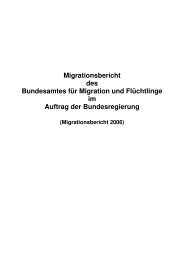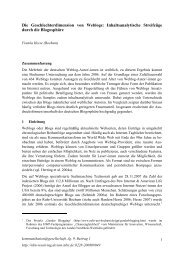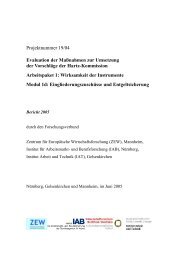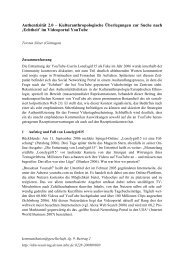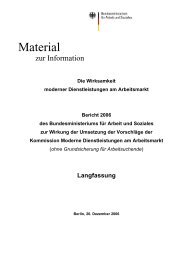Public Financial Management for PRSP - Deutsches Institut für ...
Public Financial Management for PRSP - Deutsches Institut für ...
Public Financial Management for PRSP - Deutsches Institut für ...
You also want an ePaper? Increase the reach of your titles
YUMPU automatically turns print PDFs into web optimized ePapers that Google loves.
<strong>Public</strong> <strong>Financial</strong> <strong>Management</strong> <strong>for</strong> <strong>PRSP</strong> Implementation in Malawi<br />
ever, the time to <strong>for</strong>mulate their budgets is then shorter than actually provided<br />
<strong>for</strong> by law and they may not be able to adhere to all <strong>for</strong>mal procedures.<br />
Instead they resort to in<strong>for</strong>mal rather than <strong>for</strong>mal procedures as a pragmatic<br />
solution. A common solution is <strong>for</strong> example that the budget committee decides<br />
on the budget instead of the full Assembly. Another result might be that<br />
the local authority is <strong>for</strong>ced to <strong>for</strong>mulate a tentative budget without knowing<br />
the actual ceilings <strong>for</strong> the coming financial year. This normally has the consequence<br />
that the districts have to adjust their budget, once they receive the<br />
actual ceilings. Thus, receiving ceilings too late generates more work and<br />
harder time constraints <strong>for</strong> the districts. It also costs more money <strong>for</strong> additional<br />
meetings and adds to uncertainty about resources available during the<br />
budget year.<br />
Furthermore, the central government has repeatedly introduced new PFM<br />
tools at local level such as activity-based budgeting <strong>for</strong> district assemblies<br />
without providing the necessary support <strong>for</strong> their implementation or ensuring<br />
the predictability of funding required to make activity-based budgeting a<br />
useful PFM instrument.<br />
Coordination of the institutional links between central and local<br />
government level, MoLGRD, DS and NLGFC<br />
Coordination between the DS on the one hand and the MoLGRD and the<br />
NLGFC on the other hand was determined by the different roles each institution<br />
plays and the decision to phase-out the DS. Originally, planning and<br />
budgeting of DA was to be coordinated by different institutions. The DS was<br />
assisting the DAs in the planning process (to be taken over by the MoLGRD)<br />
while the NLGFC was responsible <strong>for</strong> the coordination of budgeting and the<br />
allocation of financial resources to local governments (GFA 2005, 41).<br />
Officially, the DS was planned to stop its operation by the end of the year<br />
2005. This actually happened. However, when this research was conducted in<br />
early 2005, many interview partners were not quite sure whether it would<br />
take place. Either, they did not know about the official decision, or they were<br />
not sure, whether it was a definitive one because the discussion about terminating<br />
the DS had been going on <strong>for</strong> quite some time and the deadline had<br />
often been postponed.<br />
The tasks of the DS were to be transferred from the DS to the MoLGRD and<br />
NLGFC. This transfer influenced the effectiveness of coordination ef<strong>for</strong>ts. It<br />
German Development <strong>Institut</strong>e 115




